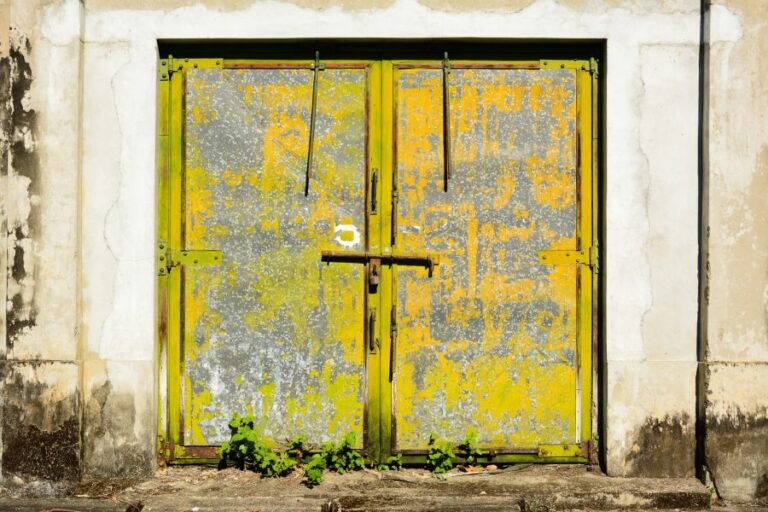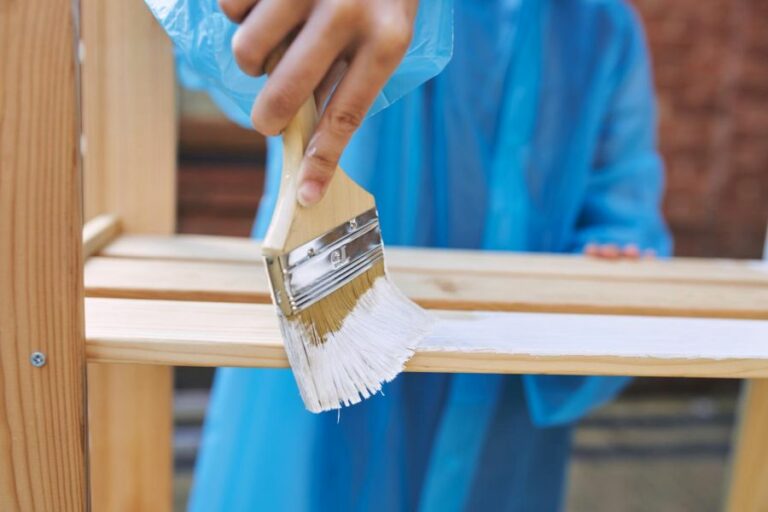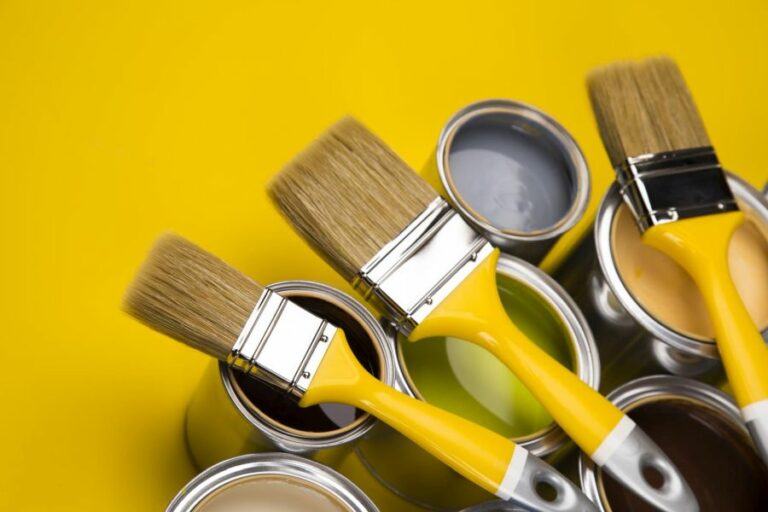Outdoor Primer Paint, 25 Things You Should Know
Are you tired of your exterior surfaces looking dull and worn out? Get ready to transform them with our latest blog post on outdoor primer paint! Discover the secret to long-lasting, eye-catching results by learning everything you need to know about primers specifically designed for outdoor use. From choosing the right type to mastering the application process, this guide provides expert tips and tricks to revive your outdoor spaces effortlessly.
Outdoor primer paint:
Outdoor primer paint is an essential first layer for exterior surfaces, providing a foundation for improved bonding and durability of the topcoat while protecting against UV rays, moisture, and extreme temperatures. Available in various types, such as latex, oil-based, and shellac, it is crucial to properly prep the surface before applying the primer for the best results. Selecting the right topcoat, specifically formulated for outdoor use, ensures a long lasting and durable finish that protects your home or building from the elements.

Discover the benefits of using outdoor primer paint, how to choose the right one for your project and tips on proper application. Unleash your inner DIY enthusiast while ensuring long-lasting protection and an impeccable finish for your outdoor surface.
Contents
- 1 Exterior Primer Paint for Outdoor Surfaces
- 2 Which primer is most suitable for exterior applications?
- 3 Is Primer Necessary for Exterior Paint Applications?
- 4 What Type of Primer Should You Choose for Exterior Painting Applications?
- 5 Is an Exterior Primer Waterproof in Nature?
Exterior Primer Paint for Outdoor Surfaces
• Why is Outdoor Primer Paint Essential?
Outdoor primer paint is an essential first layer that prepares a surface for the ultimate protective paint layer. It serves as a foundation that not only improves the bonding of the topcoat but also boosts the durability of the final coat.
Proper application of an outdoor primer ensures that the paint will fight against harsh elements such as UV rays, moisture, and extreme temperatures.
Moreover, it helps prevent common problems such as peeling, flaking, and cracking paint, ultimately saving you time and money on maintenance and repainting in the long run.
• Types of Outdoor Primer Paint
There are various types of outdoor primer paints available on the market, each catering to different surface materials and weather conditions. Here’s an overview of the most common types:
– Latex Primer
Latex primer is a water-based primer known for its quick-drying and easy-to-use nature. It works best on porous surfaces such as wood, concrete, and brick. It also works well on pre-painted surfaces, providing excellent adhesion for the topcoat. Latex primer is typically resistant to mildew and offers great flexibility.
– Oil-Based Primer
Oil-based primers are suitable for surfaces that require a stronger bond, such as metal or glossy surfaces. They offer excellent adhesion and sealing properties, making them ideal for preventing rust on metal surfaces or sealing porous surfaces like wood.
However, oil-based primers require longer drying time and produce strong fumes, making them less environmentally friendly compared to water-based primers.
– Shellac Primer
Shellac primer is a versatile and fast-drying primer known for its ability to block stubborn stains and seal porous surfaces. It offers excellent adhesion on various surfaces, including wood, metal, and plaster.
While it does feature a strong odor and requires the use of denatured alcohol for cleanup, it’s a popular choice for its overall performance and stain-blocking capabilities.
• Prepping Your Surface for Outdoor Primer Paint
For best results, it is crucial to properly prepare the surface before applying a primer. Follow these steps to ensure a clean, smooth surface:
- Clean the surface: Begin by removing any dirt, dust, grease, or grime using a mixture of mild detergent and water. Thoroughly rinse the surface with clean water and allow it to dry completely.
- Remove loose paint and debris: For surfaces with peeling or flaking paint, use a paint scraper or wire brush to remove the loose paint. You may also want to smooth the surface by sanding any rough or uneven areas.
- Repair damaged areas: Fill any cracks, holes, or gaps with a suitable filler, following the manufacturer’s instructions. Once the filler has dried, sand the area smooth and remove any excess dust.
- Protect adjacent surfaces: Before applying the primer, tape off any surrounding areas that should not be painted (such as windows, doors, and trim) and cover the ground with drop cloths to prevent paint spills.
• Applying Outdoor Primer Paint
Once the surface is prepped, follow these steps to apply the outdoor primer paint:
- Stir the primer: Before using the primer, give it a thorough stir using a paint stirrer to ensure proper consistency and even distribution of the paint components.
- Select the right tools: Choose the appropriate applicator for your surface, such as a paintbrush for detailed areas, a roller for flat surfaces, or a sprayer for large areas.
- Apply the primer: Start by cutting in the edges and corners with a brush, followed by rolling or spraying the primer onto the surface. Ensure even coverage by following the manufacturer’s recommended application technique and avoiding heavy buildup.
- Allow the primer to dry: Allow the primer to dry as per the manufacturer’s instructions, with drying time typically ranging from a few hours to overnight, depending on the temperature and humidity levels.
- Inspect and touch up if necessary: Once the primer is dry, inspect the surface for any uneven or missed areas. Apply additional primer if needed to ensure proper coverage and adhesion for the topcoat.
• Choosing the Right Topcoat
After applying the outdoor primer paint, choosing the right topcoat is crucial to ensure a long-lasting and durable finish. Here are a few factors to consider:
- Type of paint: Choose a paint specifically formulated for outdoor use, such as exterior acrylic, latex, or oil-based paint, that will provide excellent durability and weather resistance.
- Paint sheen: Exterior paints are available in various sheens, including flat, satin, semi-gloss, and gloss. The sheen you choose will affect the paint’s appearance and its resistance to dirt, moisture, and other elements.
- Color: Consider the color of the paint, keeping in mind that lighter colors tend to reflect sunlight and stay cooler, while darker colors absorb heat and may fade over time.
In conclusion, outdoor primer paint is a crucial component of achieving a long-lasting and durable paint finish for exterior surfaces.
By properly prepping the surface and applying the right type of primer and topcoat, you can ensure a beautiful, long-lasting finish that protects your home or building from the elements.
Which primer is most suitable for exterior applications?
Preparing the exterior of your home or building for painting requires the right primer. A quality primer will not only provide proper adhesion to the paint but also seal the surface and help it withstand weather conditions. But how do you know which primer is best for the job?
• Oil-Based Primers
Oil-based primers are a popular choice for exterior projects due to their durability and exceptional adhesion to various surfaces. They are suitable for a wide range of materials, such as wood, metal, or masonry.
– Advantages of Oil-Based Primers
- Excellent adhesion
- Great for porous surfaces like wood
- Seals and protects the surface from water, rot, and mildew
- Excellent stain-blocking capabilities
- Can be used under both oil-based and latex paints
– Disadvantages of Oil-Based Primers
- Longer drying time
- Heavy odor
- Requires mineral spirits for cleanup
- Not environmentally friendly
Recommendation: If you’re working with raw or untreated wood, oil-based primers work wonders. Their ability to penetrate deeply into the surface makes them ideal for sealing porous materials effectively.
• Water-Based or Latex Primers
Water-based or latex primers are another popular choice for exterior applications. They are generally easier to work with, dry faster, and are more environmentally friendly than oil-based primers.
– Advantages of Latex Primers
- Faster drying time
- Low odor
- Water cleanup
- Good adhesion to most surfaces
- Excellent resistance to mildew and mold
– Disadvantages of Latex Primers
- Not as durable as oil-based primers
- May require multiple coats on porous surfaces
- Not as effective in blocking stains
Recommendation: If you’re working with previously painted surfaces, water-based primers are a good option. They adhere well to existing paint and can be used with oil-based and latex topcoats.
• Shellac-Based Primers
Shellac-based primers are highly effective in sealing stains and preventing the bleeding of pigments through the topcoat. They dry quickly and create a hard surface that resists scratches and abrasions.
– Advantages
- Superior stain-blocking abilities
- Fast-drying
- Can be used under both oil-based and latex paints
- Excellent adhesion to most surfaces
– Disadvantages
- Not suitable for high-moisture environments
- Heavy odor
- Requires denatured alcohol for cleanup
- Not recommended for bare wood
Recommendation: If you have a surface plagued by stubborn stains, such as water damage or smoke damage, reach for a shellac-based primer. However, keep in mind that they are not recommended for high-moisture environments or bare wood surfaces.
• Choosing the Best Primer for Your Project
There are several factors to consider when selecting the right primer for your exterior project. Here are some essential aspects to evaluate:
- Surface Material: What type of material are you painting? Different primers work better on specific surfaces. For instance, oil-based primers are excellent for raw or untreated wood, while latex primers adhere well to painted surfaces.
- Surface Condition: Is the surface exposed to high moisture, heavy stains, or excessive wear? Choose a primer that can withstand these conditions while providing the necessary adhesion, sealing, and stain-blocking properties.
- VOC Levels and Environmental Impact: If you’re concerned about the environment or want to minimize unpleasant odors, opt for a low-VOC, water-based primer. Oil-based primers typically have higher VOC levels and a heavier odor.
- Compatibility with Topcoat: Ensure that the primer you choose is compatible with the type of topcoat you plan to use. Most primers can be used under both latex and oil-based paints, but always double-check the manufacturer’s recommendations.
In conclusion, selecting the best exterior primer for your project comes down to evaluating your specific needs and the surface you’re working with. Consider using oil-based primers for raw wood surfaces, latex primers for previously painted surfaces, and shellac-based primers for stubborn stains.
By choosing the right primer, you’ll set the stage for a professional and long-lasting paint job.
Primer | Advantages | Disadvantages |
|---|---|---|
Acrylic Primer | Flexible, good adhesion, works well on wood and concrete surfaces | Not as durable as an oil-based primer, may not be compatible with some surfaces |
Oil-Based Primer | Excellent durability, good adhesion, works well on various surfaces | Longer drying time, strong odor, harder to clean up |
Latex Primer | Easy to clean up, quick-drying, less odor, works well on various surfaces | Less durable compared to the oil-based and acrylic primer |
Alkyd Primer | High durability, good adhesion, works well on metal surfaces | Longer drying time, strong odor, harder to clean up |
Is Primer Necessary for Exterior Paint Applications?
When it comes to painting the exterior of a house, one of the most frequently asked questions is whether or not a primer is necessary before applying paint.
To answer this question, it is crucial to understand the purpose of a primer and the various factors that can determine its importance in any given project.
• The Purpose of the Primer
A primer is a preparatory coating applied to a surface before painting to improve the adhesion, durability, and appearance of the paint. It ensures a uniform and smooth finish by providing a consistent base for the paint to adhere to.
Primers also help in preventing stains from bleeding through the paint and can enhance the overall longevity of the paint job.
– Types of Primers
There are several types of primers available, and choosing the right one is essential for achieving the desired results. The most commonly used primers for exterior painting are:
- Latex Primer: Suitable for painted or unpainted surfaces, latex primers are popular due to their easy application and fast drying times. These primers work well on wood, metal, and masonry surfaces.
- Oil-Based Primer: Oil-based primers provide excellent adhesion and stain-blocking capabilities. They are ideal for wood, metal surfaces, and areas with heavy stains or water damage.
- Shellac Primer: Shellac primers are less common but provide excellent adhesion and stain-blocking properties. They are particularly useful for sealing wood knots and stains from water, smoke, or nicotine.
• Factors to Consider When Deciding If You Need Primer
– Existing Surface Condition
- Unpainted Surfaces: Primer is essential for bare wood, metal, or masonry surfaces, as it helps promote better adhesion and prepares the surface for the paint. Primer also plays a crucial role in blocking tannins and providing an even base for the paint.
- Previously Painted Surfaces: If the existing paint is in good condition, meaning it is not peeling or chipping, you may skip using a primer on wood or metal surfaces. However, if the current paint is chalking or showing signs of age, using a primer is recommended to ensure proper adhesion and a uniform finish.
– Surface Material
- Wooden Surfaces: Primer is particularly important for wooden surfaces, as it helps seal the wood pores and provides an even base for the paint to adhere to. Skipping primer on wood can result in uneven paint absorption and a reduced life of the paint job.
- Metal Surfaces: Metal surfaces are prone to rust and corrosion, which can bleed through the paint over time. Primers specifically designed for metal surfaces can help prevent this by providing a protective barrier and promoting adhesion.
- Masonry Surfaces: Primer is essential for unpainted masonry surfaces, such as concrete or brick, as it helps seal the porous surface and provides a consistent base for the paint to adhere to.
– Color Changes
If you are planning to paint your exterior with a significantly different color than the existing one, applying a primer can help create a uniform base, improving the coverage of the new paint and reducing the number of required coats.
• Tips for Applying Primer
- Proper Surface Preparation: Before applying primer, ensure the surface is clean, dry, and free of dirt, grease, or any loose paint or debris. For best results, sand the surface lightly to create a rough texture for the primer to adhere to.
- Choosing the Right Primer: Always opt for a high-quality primer and ensure it is appropriate for the surface material and conditions. Consult with a professional or read the product information for the best primer recommendation for your specific project.
- Applying Primer: Apply a thin, even coat of primer using a brush, roller, or spray, and let it dry completely before applying paint. It is essential to follow the manufacturer’s instructions for drying times and recommended coverage.
In conclusion, while primer is not always necessary for every exterior painting project, it is an essential step to ensure proper adhesion, uniform finish, and longevity of the paint job, especially on unpainted surfaces, wooden or metal materials, and when there are significant color changes.
Assessing the condition and material of the surface and selecting the appropriate primer can help you achieve the best possible results for your exterior painting project.
What Type of Primer Should You Choose for Exterior Painting Applications?
A well-selected primer can make all the difference when it comes to the longevity and overall appearance of your exterior paint job.
• What Is a Primer, And Why Is It Important?
A primer is a preparatory coating applied to surfaces before painting. It serves as a foundation, helping the paint to adhere more effectively and ensuring a uniform and durable finish.
The use of an appropriate primer can significantly improve the lifespan and appearance of your paint job while also providing additional protection to the surface beneath.
Some of the key benefits of using an exterior primer include:
- Enhanced adhesion, reducing the likelihood of chipping or peeling paint
- More consistent and smooth finish
- Improved moisture and stain resistance
- Effective coverage and hiding of minor imperfections
- Extended lifespan of your exterior paint job
• Factors to Consider When Choosing an Exterior Primer
Several factors will influence your choice of exterior primer. Keeping these factors in mind will help ensure a successful and long-lasting paint job.
– Surface Material and Condition
Different surfaces and materials require different primers. Common exterior surfaces include wood, metal, concrete, and masonry. It is crucial to choose a primer specifically formulated for the material you will be working with.
Additionally, the condition of the surface plays a significant role in selecting the right primer. Consider the following factors:
- Porosity: Highly porous surfaces like wood and concrete require a primer that seals and provides a smooth base. Look for a high-solid or high-build primer for these surfaces.
- Existing coatings: If your surface has previously been painted or stained, choose a primer designed to adhere to existing coatings.
- Contaminants: If your surface has stains or is prone to mildew or efflorescence, select a primer with stain-blocking and mildew-resistant properties.
– Paint Type
The type of paint you are using will also affect your choice of primer. Water-based (latex) paint generally requires a water-based primer, while oil-based (alkyd) paint usually requires an oil-based primer.
If you are switching paint types, look for a transitional primer designed to help with compatibility between the old and new paint.
– Environmental Conditions
The location of your project impacts the level of exposure to various elements, such as moisture, temperature extremes, UV radiation, and air pollution. When choosing a primer, consider a product with properties that can protect your paint job and surface from these conditions.
• Types of Exterior Primers
There are several types of exterior primers available, each suited to different materials, paint types, and environmental conditions. Here is an overview of some of the most common exterior primer types:
– Latex (Water-Based) Primer
Latex primer is a popular choice for many DIY projects due to its ease of use, quick drying time, and low odor. It is also more environmentally friendly than oil-based primers. Latex primers are suitable for most surfaces, including wood, masonry, and metal.
I recommend: KILZ Premium High-Hide Stain Blocking Latex Primer/Sealer
– Oil-Based (Alkyd) Primer
Oil-based primers have been a staple in the painting industry for many years due to their durability and superior adhesion. These primers are ideal for surfaces that require extra stain-blocking properties, such as wood with tannin bleed or surfaces with heavy contamination.
However, keep in mind that oil-based primers have longer drying times and emit strong odors.
I recommend: Zinsser Cover Stain Oil-Based Primer
– Shellac-Based Primer
Shellac-based primers are known for their excellent adhesion, stain-blocking capabilities, and ability to seal porous surfaces. They are particularly useful for addressing water stains, smoke damage, or severe odors. However, these primers have a strong smell, and clean-up requires the use of denatured alcohol.
I recommend: Zinsser B-I-N Shellac-Based Primer
– Acrylic (Waterborne) Primer
Acrylic primers combine many of the advantages of latex and oil-based primers while minimizing some of their drawbacks. They offer excellent adhesion, and flexibility and are compatible with most paint types. These primers are also low-odor and quick-drying, like latex primers.
I recommend: Benjamin Moore Fresh Start High Hiding All-Purpose Primer
• In Conclusion
Selecting the right primer for your exterior paint project is essential to achieving a long-lasting and beautiful result.
By considering factors such as surface material and condition, paint type, and environmental conditions, you can identify the most suitable primer for your needs. With the proper preparation and primer choice, your exterior paint job will shine for years.
Primer Type | Description |
|---|---|
Acrylic Latex Primer | Water-based, versatile, and best for most exterior surfaces. |
Oil-Based Primer | Good for sealing and covering stains but less eco-friendly. |
Shellac-Based Primer | Excellent at covering and sealing stains, but has a strong odor. |
Masonry Primer | Specifically designed for masonry surfaces like brick and concrete. |
Is an Exterior Primer Waterproof in Nature?
When it comes to painting the exterior of your home or building, one might wonder – is exterior primer waterproof? Before diving into the answer to this question, let’s talk more about the importance of primers and their role in painting projects.
• The Importance of Exterior Primers
Primer is a critical component in any painting project, whether you are working on an interior or exterior surface. A primer works as a foundation for paint, increasing adhesion to the surface, creating a more uniform appearance, and improving the durability of the paint.
In addition to these benefits, exterior primers help paint withstand weathering, exposure to the sun, and the effects of moisture.
– Adhesion
Exterior primers provide a base coat that helps your paint adhere to surfaces more effectively. This is crucial for ensuring that your paint job lasts longer and maintains its appearance over time. Without primer, paint can crack, peel, and show other signs of premature wear.
– Surface Uniformity
Primer also ensures a more uniform appearance on the surface you are painting. It covers stains, existing paint, and other imperfections so that your final paint color and finish are more consistent.
– Durability
Exterior primers create a protective barrier between paint and the underlying surface, which helps improve the lifespan of your paint job. This barrier reduces the risk of paint chipping, cracking, or peeling due to weather, sunlight, or other environmental factors.
• Understanding Waterproof Exterior Primers
Now that we have a general understanding of the purpose of exterior primers, let’s discuss their waterproof capabilities. In general, exterior primer is not completely waterproof but offers a level of moisture resistance.
It is essential to keep in mind that primer is not meant to be a standalone product and should be covered with a topcoat of paint to achieve maximum protection.
– Moisture Resistance
Many exterior primer products have water-resistant properties. This means they can still provide a protective layer against moisture damage, such as mold or mildew growth. Moisture resistance is especially important in areas with high humidity or frequent rainfall.
– Waterproof Topcoat Paints
To achieve a waterproof exterior surface, you will need to apply a waterproof topcoat paint over your primer. Many high-quality exterior paints on the market provide this level of protection.
These paints work together with your primer to form a fully waterproof barrier to protect your home or building from damage caused by water infiltration.
• Tips for Choosing the Right Exterior Primer
Since not all exterior primers have the same water-resistant properties, here are some tips to help you select the right product for your project.
– Assess Your Needs
Before choosing a primer, assess the specific needs of your project. Consider the surface you are working on, the existing paint or coating, and the local climate. Moisture resistance may be more crucial in some areas than others, so shop accordingly.
– Look for Primers Designed for Your Project
There are specific primers designed for different exterior substrates, such as wood, brick, or stucco. Ensure you are using a primer that is specifically designed for the type of surface you are painting to achieve the best results.
– Check for Water-Resistant Properties
When shopping for primer, look for water-resistant properties in the product description or on the label. Some primers may explicitly state “water-resistant” or “moisture-resistant,” which will provide an additional layer of protection against moisture damage.
– Consult with Professionals
If you’re unsure about choosing the right primer for your project, consult with a professional painter, contractor, or specialist at your local paint store. They will be able to provide you with expert advice and recommendations based on your specific needs.
• Final Thoughts
In conclusion, while the exterior primer is not completely waterproof, it does offer a level of moisture resistance to help protect your surfaces from water-related damage. To achieve optimal waterproofing, it is essential to apply a waterproof topcoat paint over your primer.
Keep this information in mind as you shop and plan for your painting project, and you’ll be well on your way to achieving a beautiful, durable, and water-resistant exterior finish.







